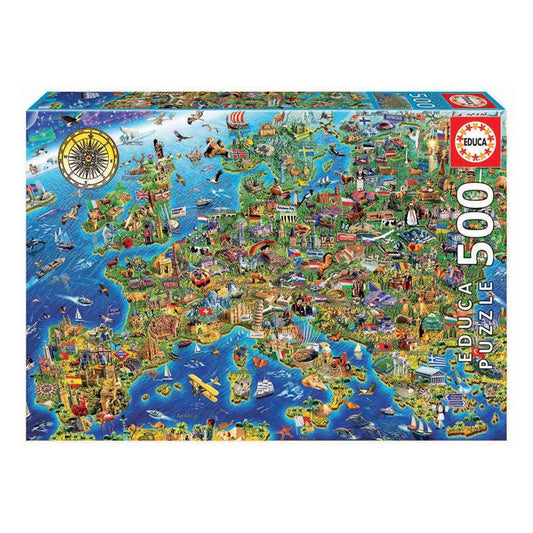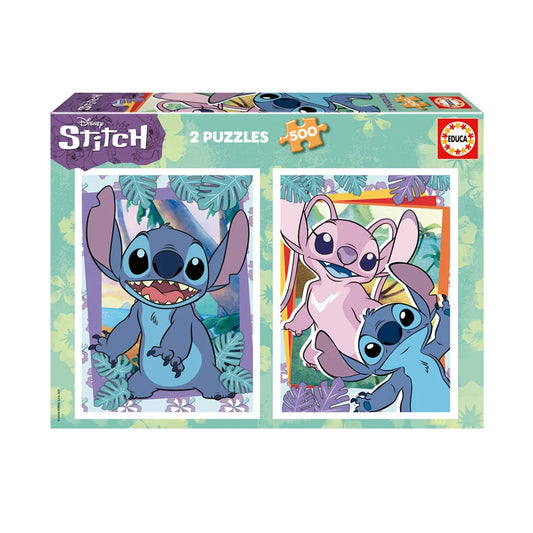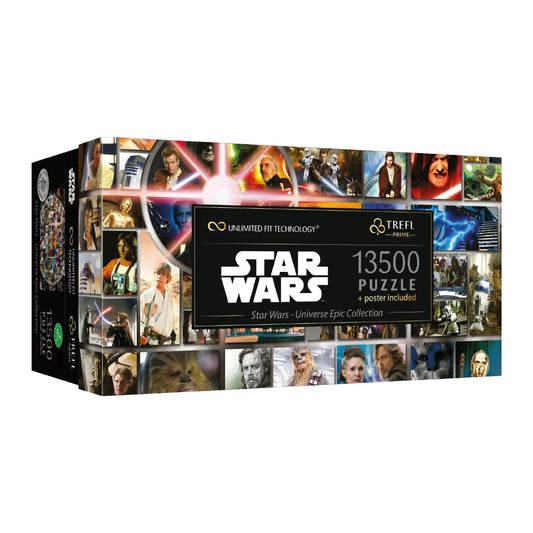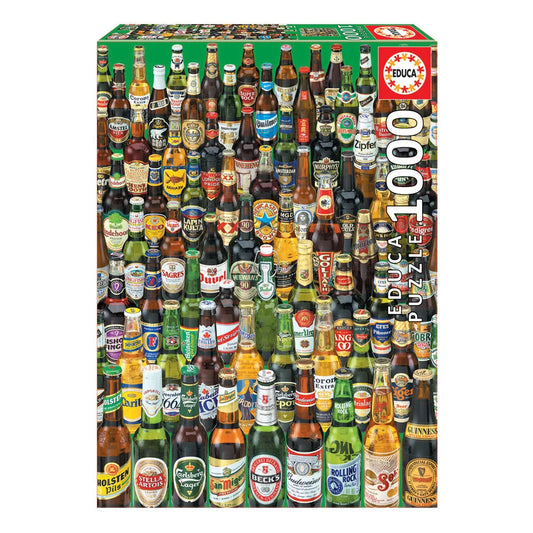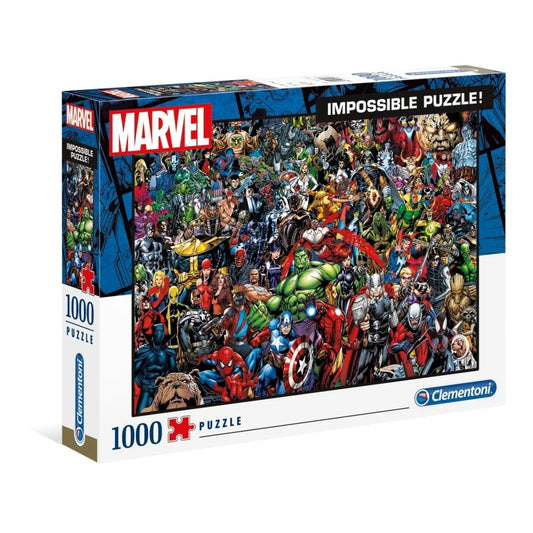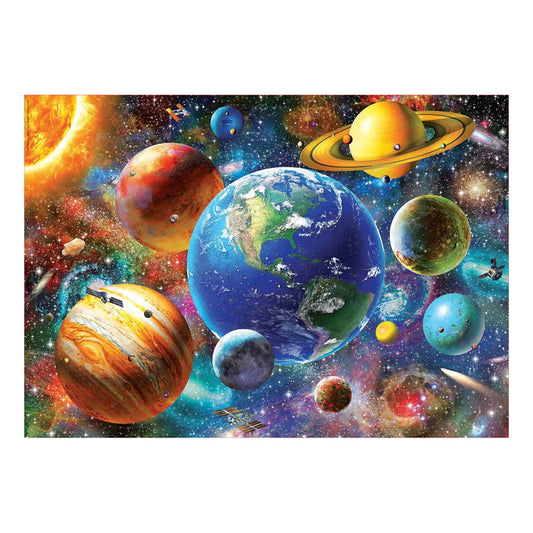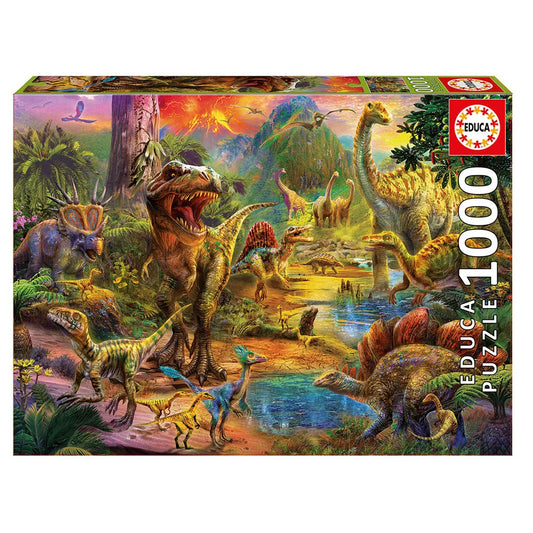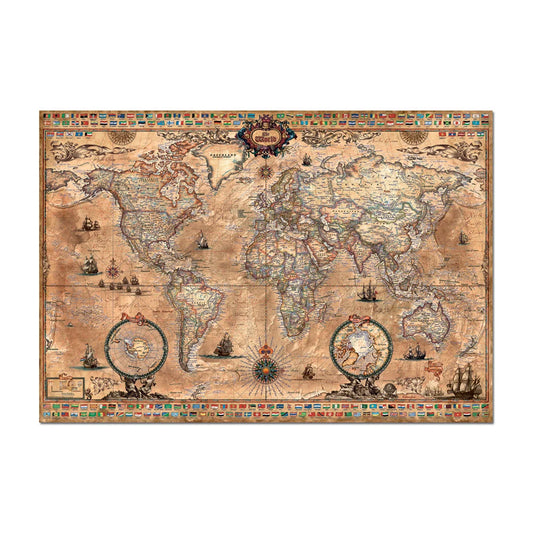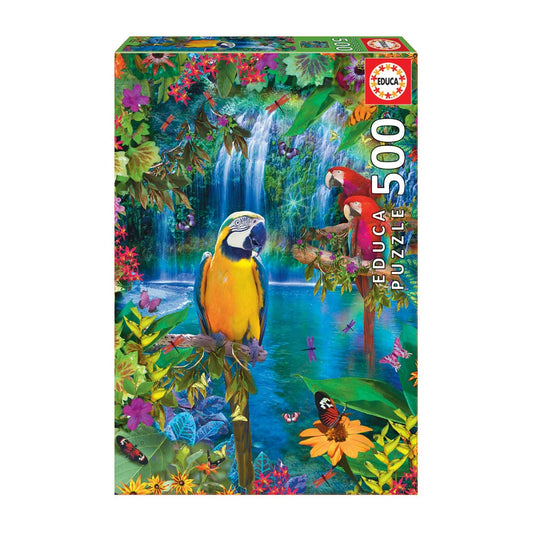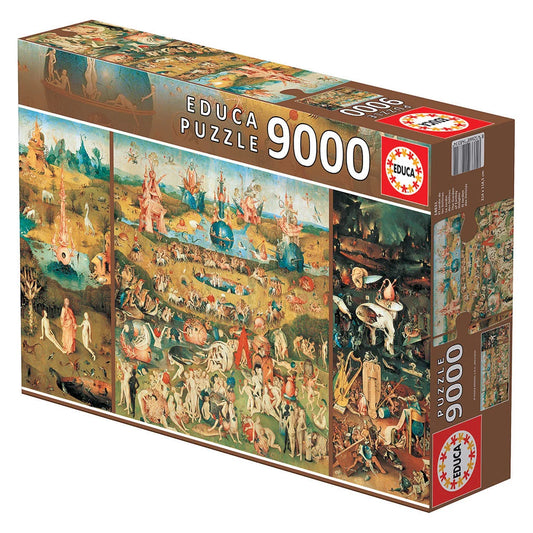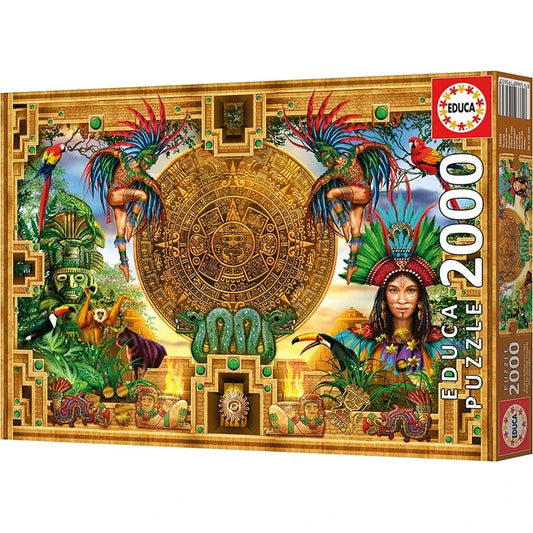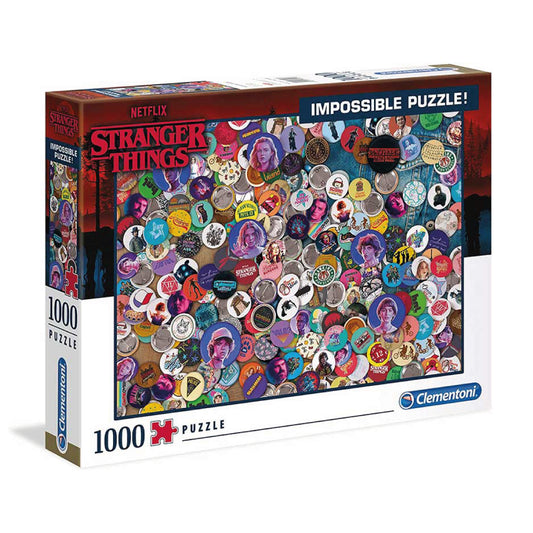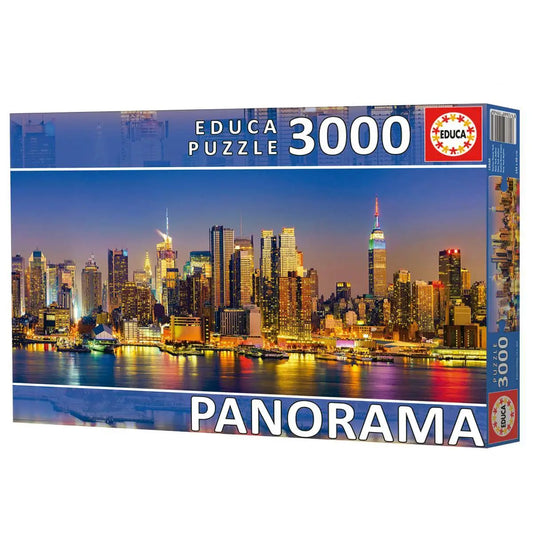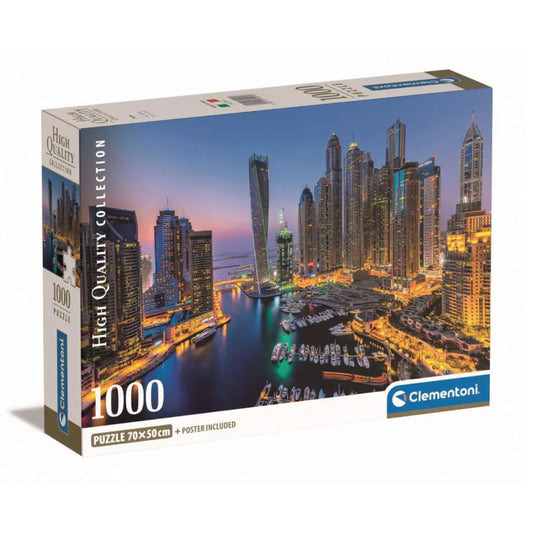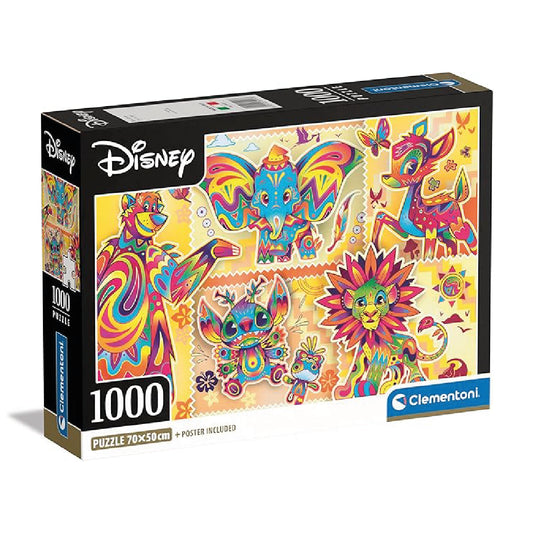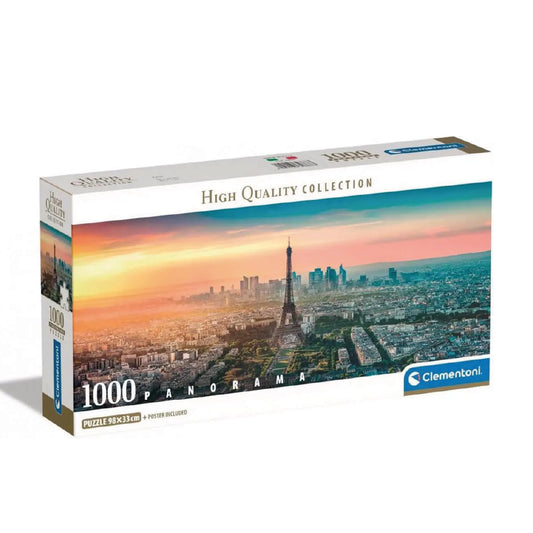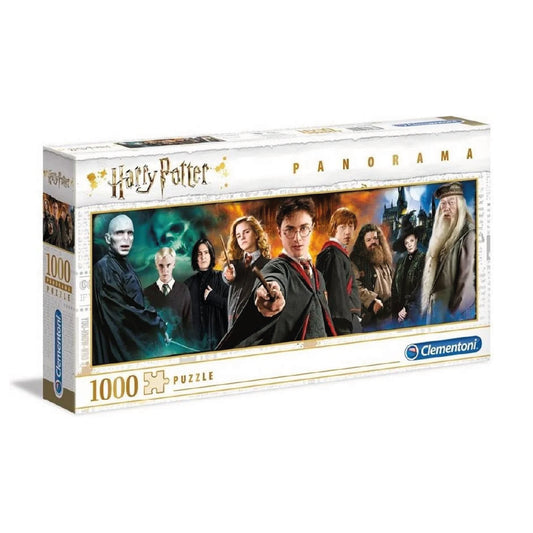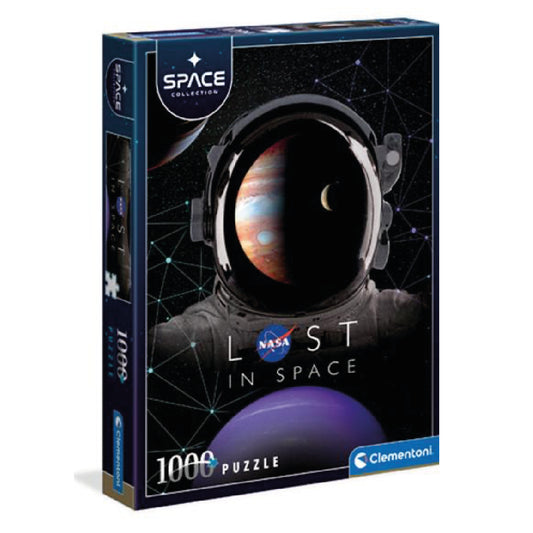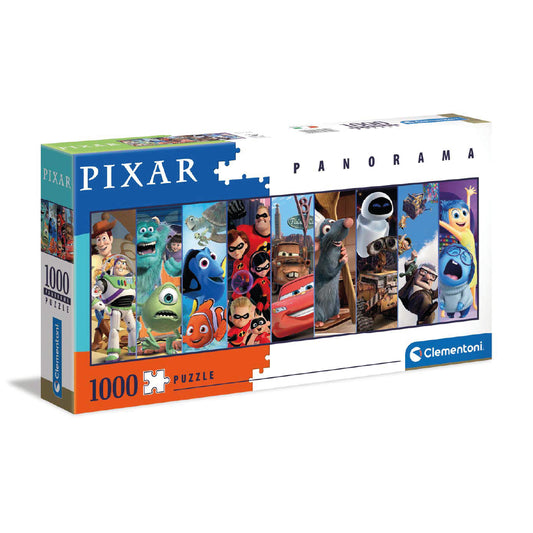
What are the millennial puzzle trends?
First of all, it's important to clarify that these are not the same puzzles with bucolic landscapes or fruit baskets that decorated the boxes of our childhood. millennial puzzles are a complete reinvention of this ancestral pastime, adapted to the aesthetic sensibilities and psychological needs of a generation marked by digital overload.
Distinctive features
What truly defines a "millennial" puzzle and separates it from a traditional puzzle?
- Disruptive design – Goodbye images of Swiss chalets, hello minimalist illustrations, urban art, abstract designs, 90s pop culture references, or memes transformed into works of art. Millennial puzzles are design objects that deserve to be framed after completion.
- Instagrammable value These pieces are designed with social media in mind. From the premium packaging (often in reusable cans or boxes) to the final product, everything is designed to be visually appealing when photographed.
- Integrated storytelling – Many include narratives or concepts behind the image, transforming the experience into something deeper than just putting pieces together.
- Additional purpose – Sustainability, social causes, support for independent artists – millennial puzzles often combine entertainment with the subtle activism so valued by this generation.
As Chandler Bing from "Friends" would say: "Could this hobby be MORE hipster?" But the truth is that the transformation was so profound that its origins are barely recognizable.
Milestones of evolution
The millennial puzzle revolution began tentatively around 2018, accelerated dramatically during the pandemic lockdown in 2020, and has continued to reinvent itself ever since:
- 2018-2019 : The first puzzles with contemporary designs begin to appear, still as niche curiosities
- 2020 : Lockdown creates the perfect storm – millennials bored at home rediscover puzzles as an escape from doomscrolling
- 2021-2022 : The first brands dedicated exclusively to puzzles with contemporary design emerge
- 2023-2024 : The phenomenon goes beyond the category of "passing trend" and establishes itself as part of millennial culture
- 2025 : Puzzles influence other areas, from decoration to fashion, and become status symbols among 25-40 year olds
What are the benefits of puzzles and how does this trend work?
Are we just dealing with another case of commercialized nostalgia, or is there something deeper to this return to puzzles? Science and sociologists have some interesting answers.
The antidote to digital anxiety
For a generation that grew up during the analog-to-digital transition and now lives a permanently connected life, puzzles represent a safe way to "disconnect" without the discomfort of being completely offline. It's what psychologists call "focal distraction"—you keep your brain busy enough that you don't feel the urge to check your phone, but not so busy that you feel additional stress.
A study by the Faculty of Psychology at the University of Lisbon revealed that 78% of Portuguese millennials who adopted puzzles as a regular hobby reported significantly lower levels of general anxiety. It's almost as if each piece fitting together is a small act of mindfulness.
Nostalgia reimagined
Millennials are known for their complex relationship with nostalgia. On the one hand, they are the first generation to have digital access to their past through streaming feeds, playlists, and catalogs. On the other, they live in a present characterized by economic and social uncertainty that makes the "old days" particularly appealing.
Puzzles offer a perfect bridge: they're inherently nostalgic (they hark back to childhood, to afternoons at grandparents' house), but they've been completely reimagined to align with contemporary aesthetics. It's the best of both worlds—the comfort of the familiar with the excitement of the new.
The tangible experience in a virtual world
In an increasingly digitalized economy, where even money has become invisible, puzzles offer a tactile, physical experience that many millennials have discovered they lack. There's something deeply satisfying about handling physical pieces and seeing a project take shape in the real world, as opposed to the endless digital projects that characterize many of their professional lives.
"It's as if we've rediscovered the pleasure of creating something with our hands," explains Mariana Santos, 34, founder of a puzzle club in Lisbon. "After spending the day creating digital content that disappears from your feed the next day, there's something incredibly rewarding about completing a puzzle that can be hung on the wall."
Social but introverted
Another characteristic that makes puzzles ideal for millennials is their simultaneously social and introverted nature. This generation values social experiences, but many identify as "social introverts"—they prefer quality interactions in controlled environments.
A puzzle evening allows for meaningful conversations without the pressure of maintaining constant eye contact or uninterrupted conversation. It's social, but with the option to pause and focus on the manual activity when needed—the perfect balance.
Common mistakes and frequently asked questions
"Puzzles are lonely and boring activities"
This is perhaps the biggest misconception about puzzles in the millennial context. New puzzles are often shared experiences, whether physically at "puzzle parties" or virtually through social media progression groups. Far from being boring, it becomes a social event where the shared satisfaction of completing difficult sections is often celebrated with a toast!
"I don't have space to leave a puzzle half-finished"
A real problem for millennials who often live in small apartments in big cities. The industry quickly adapted with solutions like roll-up puzzle mats, dedicated tables with drawers, and even magnetic vertical puzzles for those who really don't have the horizontal space available. You can find several solutions at accessories section from the Puzzle Shop.
"Traditional puzzles are too old-fashioned for my taste"
If you still think of puzzles as those Swiss landscapes with little houses and flowers, you urgently need to check out these new brands! From urban illustrations to minimalist abstract patterns, including references to cult series like "Stranger Things" or "The Office" – there's a puzzle for every personality. Brands like Cloudberries, Piece & Quiet, or the Portuguese Puzzle Me Up are completely redefining the aesthetics of this pastime.
"They are too expensive for single use"
It's true that some premium-design puzzles can be more expensive than traditional ones, but millennial puzzle culture has already developed solutions: from swap clubs (complete a puzzle and trade it with another member) to the trend of framing and using it as decoration. Furthermore, many brands are betting on "everlasting puzzles" – designs so good you'll want to put them together more than once.
Practical recommendations
If you're thinking about joining this trend or are already an enthusiast looking to elevate the experience, here are some recommendations:
The most Instagrammable puzzles of 2025
- "Neon Lisboa" by Puzzle Me Up – A tribute to Lisbon's nightlife with neon colors and glow-in-the-dark urban design. The Portuguese puzzle that's winning over millennials across Europe.
- "Gradient Dreams" by Cloudberries – A minimalist color gradient that looks like it came straight out of a well-curated Instagram feed.
- "Nostalgia 90" by Heye – A puzzle that brings together dozens of pop references from the 90s, from Tamagotchis to VHS tapes and retro consoles.
- Ravensburger's "Tiny House" – For dreamers of the "tiny house" movement, a puzzle with non-traditional cuts that form a perfect minimalist home.
- Eeboo's "Sustainable" – Printed on 100% recycled cardboard with vegetable inks, this puzzle not only has a contemporary design but also supports environmental practices.
All these millennial puzzles can be found in trends section from the Puzzle Shop.
How to create your Instagrammable puzzle corner
The true millennial puzzle enthusiast knows that the environment is as important as the puzzle itself:
- Invest in a dedicated table or puzzle mat that complements your decorating style.
- Create a puzzle bar with your favorite snacks and drinks for long sessions.
- Lighting is crucial – a good, adjustable lamp makes all the difference to the experience
- Beautiful containers to organize your items (those ceramic bowls you never use are perfect)
- A good playlist or podcast to follow (the Puzzle Store has themed playlists on the blog)
Community and events
One of the most interesting aspects of this trend is its community component:
- Dedicated Facebook and Instagram groups where Portuguese puzzlers share tips and progress
- Monthly meetings in cafes in Lisbon and Porto (search for "Puzzle & Coffee" on social media)
- Seasonal challenges like the "Summer Puzzle" or the "Puzzle Advent Calendar" at Christmas
- Workshops on framing and preserving finished puzzles
In summary:
The journey of puzzles from grandma's desk to Instagram stories is more than just an aesthetic trend—it represents a genuine response to the needs of a generation seeking balance in a hyper-connected world. millennial puzzles combine nostalgia, mindfulness, controlled socialization and personal expression in an activity that, against all odds, has managed to become cool.
As Marty McFly would say in "Back to the Future": "I think your kids are going to love this." Only in this case, it's millennials who are rediscovering and reinventing their parents' and grandparents' pastime, creating an entire culture around it.
Are you ready to join this analog revolution? Discover the millennial collection from Loja dos Puzzles and find the perfect puzzle for your next Instagram post. Don't forget to use the hashtag #PuzzleMillennialPT to join the growing community of Portuguese puzzle enthusiasts!

